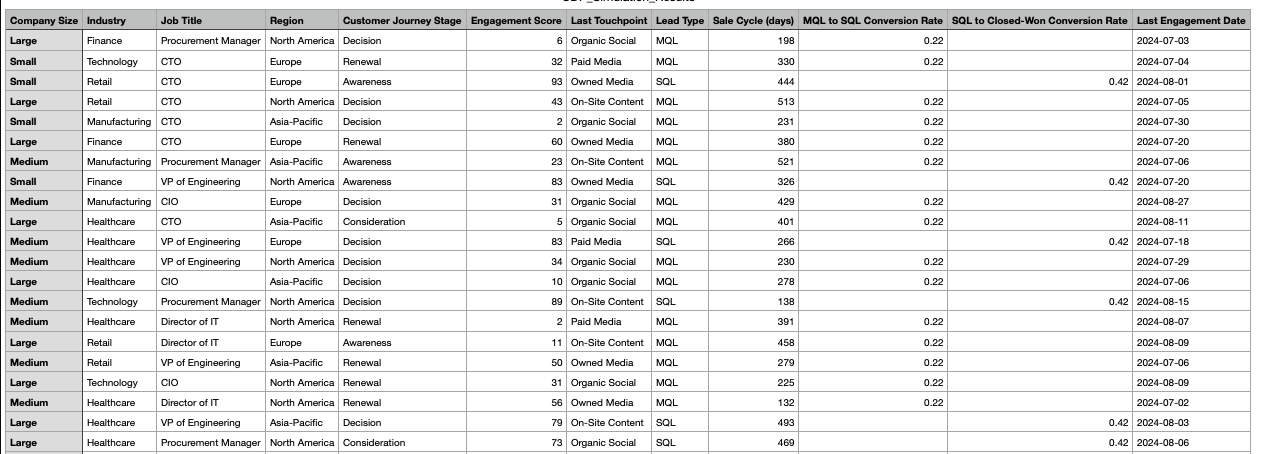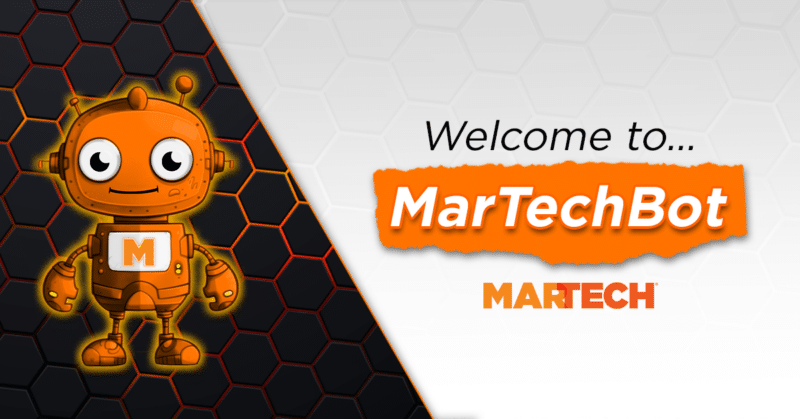What if you could test-drive an entire marketing technology platform and simulate marketing and sales efforts without risking a single dollar?
Thanks to ChatGPT, I did just that. It’s another compelling use case for maximizing the value of generative AI.
CDPs have gained marketers’ attention by unifying customer data and driving smarter marketing. But instead of just reading about the capabilities, I wanted to see it in action. Could ChatGPT simulate a full-scale marketing and sales strategy for a B2B SaaS platform? Spoiler alert: It can, and the results were eye-opening.
Why build a CDP simulator?
A customer data platform (CDP) unifies customer data from various sources — think website interactions, CRM interactions and email engagement — in one platform. This enables a complete view of the customer journey.
But what does that look like in practice?
Rather than theorizing, I used ChatGPT (I’m a paid subscriber, but everything in this post was done using the freely accessible 4o-mini model) to help me build a CDP simulator. First, I generated fake user data for a B2B SaaS platform and ran campaigns across organic social, paid media and owned content. By simulating customer touchpoints like demo requests, webinar sign-ups and content downloads, I aimed to see how a CDP could improve marketing efficiency and drive sales.
Here’s how the experiment unfolded — and what I learned about the value of CDPs — and perhaps more importantly, how to use generative AIs to run simulations for a variety of situations.
Dig deeper: AI in marketing: Examples to help your team today
The prompts
The journey started with a conversation:
I want you to build me a CDP customer data platform simulator. We will create fake user data. Create a sample marketing campaign and use the CDP to simulate scenarios. What questions do you have before we start?
ChatGPT asked me a litany of questions. It wanted me to define audience/user data, data inputs and sources, segmentation and more. To speed up the process, I added some additional context:
Let’s keep this fairly generic. Please generate fake user data, create sample marketing campaigns and use the CDP to simulate scenarios. Add high-level MQL and SQL tracking so we can simulate the difference between marketing and sales activities. You will also execute a mix of organic social media, owned media and paid campaigns.
After reviewing the response, I asked ChatGPT to make a few other assumptions:
The sale cycle is a minimum of three months and a maximum of 18 months. We have an average level of brand awareness and an average level of share voice in the marketplace.
ChatGPT generated fake user data for my simulation.
Simulated marketing campaigns: A look inside
The simulation broke the customer journey into four key stages: Awareness, Consideration, Decision and Renewal. The CDP allowed me to deliver personalized messaging to different stakeholders within the buying committee — think CTOs, procurement managers and directors of IT.
Example 1: Personalized email for an awareness-stage lead
One of our simulated users, a CTO at a medium-sized healthcare company, engaged with our LinkedIn content and downloaded a whitepaper. The CDP classified them as an “Awareness” stage lead, and we sent a personalized email offering a short demo video:
Subject: How [Your SaaS Product] Can Help Transform Healthcare Operations
Content: “Hi [Name], I saw you recently downloaded our whitepaper on healthcare operations. I thought you might enjoy this quick demo on how we’re helping similar companies streamline their workflows.”
According to the simulator, this small touch of personalization led to higher engagement and faster movement from MQL to SQL status.
Highlights and lowlights: Marketing campaign results
The simulation highlighted several benefits of using a CDP to manage marketing and sales processes:
- Personalization at scale: One of the biggest advantages was delivering personalized content at every stage of the customer journey. Decision-stage leads received custom demo invitations, while renewal-stage users got tailored offers based on their previous interactions.
- Multichannel coordination: The CDP enabled us to coordinate campaigns seamlessly across organic social, on-site content and paid media. Retargeting campaigns on LinkedIn and Google Display Network were especially effective at re-engaging decision-makers who hadn’t yet committed.
It was insightful (and fun!) to experiment with the simulation. For example, I asked for a breakdown of engagement scores across various channels and lead types:
Organic social: Underperformed for smaller companies in the awareness stage, but was more effective when supported by email follow-ups.
Paid media: Strong performance for mid-funnel leads, particularly in the decision stage for large companies.
Owned content: Webinars and case studies played a key role in driving MQLs to SQLs, especially in the technology and finance industries.
Our simulation also revealed some areas that need improvement:
Organic social struggles: Organic social content was less effective at driving awareness for smaller companies. These leads often required more personalized outreach to move them through the funnel.
Churn risk at renewal: Smaller companies in the retail and finance industries were at higher risk of churn during the renewal stage. Without strong, personalized renewal offers, these users were more likely to drop off, despite high engagement earlier in the cycle.
Dig deeper: Where to deploy AI for maximum impact
CDP vs. traditional approaches: Key comparisons
I was curious and asked ChatGPT how this same campaign would fare without a CDP in place. Again, the simulator took the question and ran with it.
With a CDP, data is unified and real-time, allowing marketers to create dynamic segments, personalize messaging based on engagement and track MQLs and SQLs with precision.
Traditional marketing often struggles with siloed data and generalized messaging. Without the unified view a CDP provides, marketing efforts are less targeted, and sales cycles tend to drag on longer due to less effective lead nurturing.
Simulations are helpful, but not perfect
Here’s the thing: I intellectually knew all about CDPs before this experiment. I’ve followed insights from leaders like David Raab, kept up with developments in the CDP space on MarTech, and absorbed content from experts like Greg Krehbiel. But despite all of this, I never had the opportunity to get hands-on with a CDP myself. (If you are a vendor, please don’t take this as an invitation!)
My CDP simulator — without a significant investment of time or resources — allowed me to get hands-on and dig into what a marketer might expect while working with these types of platforms. I wanted to see if I understood what vendors say about their platforms and how those features might map into a marketing workflow.
While CDPs were my focus for this exercise, this same approach could be applied to many other technologies — content management, digital asset management, customer experience platforms and more. Running a simulation lets you explore how well you really understand these tools and whether they deliver on their promises.
This exercise also shows that ChatGPT isn’t just for conversations — it can simulate real business scenarios and offer valuable, data-driven insights.
If you’re curious about how martech tools like CDPs could impact your strategy, try running your own simulations. It’s a low-risk way to gather insights and make smarter, more informed decisions. Our free MarTechBot will help you get started right away.
Related stories
New on MarTech
@media screen and (min-width: 800px) { #div-gpt-ad-6013980-7 { display: flex !important; justify-content: center !important; align-items: center !important; min-width:770px; min-height:260px; }
}
@media screen and (min-width: 1279px) { #div-gpt-ad-6013980-7 { display: flex !important; justify-content: center !important; align-items: center !important; min-width:800px!important; min-height:440px!important; }
}
.avatar-border { border: 3px solid #ee3024; } .badge-color { border: 1px solid #ee3024 !important; background-color: #ee3024 !important; }





